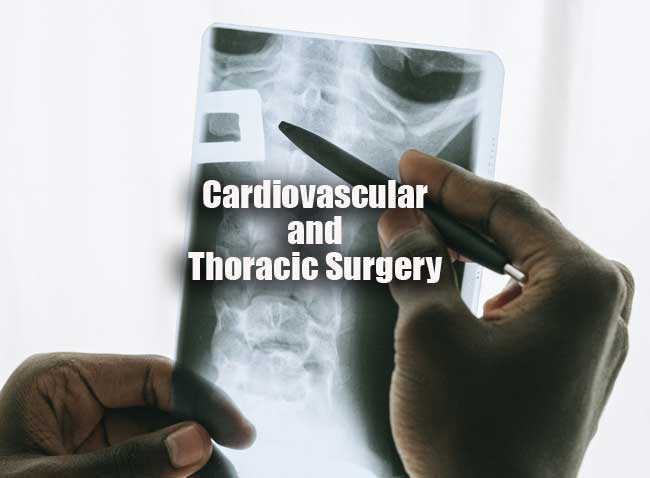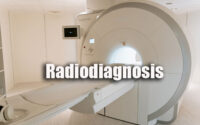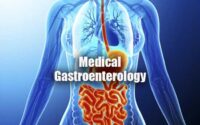Cardiovascular and Thoracic Surgery Practice Set
Cardiovascular and Thoracic Surgery Practice Set paper for the written examination is given below. Candidates who are looking for Cardiovascular and Thoracic Surgery exam Practice Set paper can find in this section. The applied candidates who are getting prepared for the Cardiovascular and Thoracic Surgery can view this page for the Cardiovascular and Thoracic Surgery Last Ten Years Practice Set Papers.

Download the Cardiovascular and Thoracic Surgery Practice Set & Solutions & make it as a reference for your exam preparation. Take advantage of these Cardiovascular and Thoracic Surgery Practice Set Papers in a proper manner to get qualifying Marks. Last 5 years Cardiovascular and Thoracic Surgery Practice Set Papers provided here. Candidates who are applied for the above exam can check and download the Cardiovascular and Thoracic Surgery Practice Set Papers from here.
Practice Set on Cardiovascular and Thoracic Surgery
1. During Cath study, square root Sign is found in
(1) Constrictive pericarditis
(2) Cardiac tamponade
(3) Restrictive cardiomyopathy
(4) All of the above
2. Most common tumor in posterior mediastinum is
(1) Neurogenic tumors
(2) Teratoma
(3) Lymphoma
(4) Bronchogenic cyst
3. In thymoma all are seen except
(1) Hypergammaglobunemia
(2) Hyperalbuminemia
(3) Red blood cell aplasia
(4) Myasthenia gravis
4. FEV1 and DLCO of ___________ % of predicted value is indicative for lung surgery.
(1) more than 20-40%
(2) more than 40 — 60 %
(3) more than 60 — 80 %
(4) more than 80 %
5. Contraindication of bronchoscopy are all except
(1) Coagulopathy
(2) Recent MI
(3) Patients with high risk situation for increasing intracranial pressure.
(4) All of the above.
6. Patients with an ___________ MVo2 arc at high risk of thoracic surgery.
(1) less than 10-12 ml/kg/min
(2) 15 to 20 ml/kg/min
(3) 20 to 25 ml/kg/min
(4) more than 25 m/kg/min
7. A prolonged air leak is defined as one that last longer than __________ days postoperatively.
(1) 3 days
(2) 5 days
(3) 7 days
(4) 10 days
8. Post-pneumonectomy syndrome is torsion or compression of the ___________ due to mediastinal shift after pneumonectomy.
(1) Trachea
(2) Bronchus
(3) Pulmonary vasculature
(4) All of the above
9. Which drug is not used for protection of brain and spinal cord during operation requiring circulatory arrest and clamping of the descending thoracic aorta ?
(1) Methyl prednisolone
(2) Calcium
(3) Thiopentone
(4) Naloxone
10. The artery of Adamkiewicz arises most commonly from
(1) T5-T8
(2) T9-T12
(3) L1-L2
(4) L2—L5
11. Which aortic aneurysms enlarges at the fastest rate ?
(1) Abdominal aortic aneurysm
(2) Thoracic aortic aneurysm
(3) Aortic arch aneurysm
(4) Ascending aorta aneurysm
12. Which statement is incorrect regarding acute aortic dissection ?
(1) S.T. segment depression occurs commonly comparative to S.T. segment elevation.
(2) D-Dimer is highly elevated.
(3) Sensitivity and specificity of T.E.E. is more than 85%
(4) Thrombolysis can be given safely
13. Which one of the following is not an extraanatomic bypass grafting ?
(1) Aortofemoral bypass
(2) Axillofemoral bypass
(3) Femorofemoral bypass
(4) Thoracofemoral bypass
14. Indication of Lumbar svinpathetectomy
(1) Buerger’s disease
(2) Vasospastic disorder
(3) Non-bypassable atherosclerotic occlusion
(4) All of the above
15. Leriche’s syndrome includes
(1) Claudication in leg
(2) Decreased sexual potency
(3) Absence of femoral pulse
(4) All of the above
16. For aortofemoral grafting which prosthetic graft is used ?
(1) Dacron graft
(2) P.T.E.E. graft
(3) Biologically coated graft
(4) All of the above
17. Profunda artery originates _________ below the inguinal ligament.
(1) 1-3 cm
(2) 3—5cm
(3) 5-7 cm
(4) 7-9cm
18. Which medical therapy is not useful for patients with claudication ?
(1) Pentoxyphyllina
(2) Cuilastazole
(3) Xanthine Nicotinate
(4) B-blockers
19. Chronic limb ischemia is defined by all except
(1) Persistent recurring rest pain requiring opiate analgesia for more than 2 weeks.
(2) Ankle systolic pressure lower than 50 mm Hg.
(3) Toe systolic pressure lower than 30 mm Ig.
(4) Claudication.
20. Claudication occurs at __________ ankle brachial index.
(1) More than 0.80
(2) 0.40 to 0.80
(3) 0.20 to 0.40
(4) Less than 0.20
| Practice Set | MCQs |
| Quiz | Questions and Answers |
21. The most frequent site for thromboembolism
(1) Cerebral artery
(2) Brachial artery
(3) Mesenteric artery
(4) Femoral artery
22. Fogarty embolectomy catheters were popularized for acute thromboembolism during
(1) 1960’s
(2) 1940’s
(3) 1980’s
(4) 1920’s
23. Non-atheromatous cause of chronic infrainguinal limb ischemia is
(1) Popliteal artery entrapment syndrome.
(2) Advential cystic disease.
(3) Pseudoxanthoma elastica.
(4) All of the above.
24. Risk factor modification for non- operative management of peripheral vascular disease patients
(1) Smoking cessation
(2) Antiplatelet & stain therapy
(3) Management of Hypertension and Diabetes
(4) All of the above
25. Treatment of choice for Type A iliac lesion (T.A.S.C. classification)
(1) Endovascular therapy
(2) Surgery
(3) Both of the above
(4) None of the above
26. The most common cause of extra- cranial carotid artery is
(1) Atherosclerosis
(2) Fibromuscular dysplasia
(3) Takayasu’s arteritis
(4) Arterial dissection
27. Gold standard diagnostic modality for atherosclerotic carotid disease is
(1) Dopplar ultrasound
(2) D.S.A.
(3) MR.A.
(4) C.T.A.
28. S.V.C. syndrome is most commonly caused by
(1) Malignant tumor compression
(2) Fibrosing mediastinitis
(3) Infectious masses
(4) Iatrogenic causes secondary to indwelling catheters
29. Which is not a complete vascular ring ?
(1) Double aortic arch
(2) Right aortic arch with retrooesophageal left subclavian artery.
(3) Left aortic arch with retrooesophageal right subclavian artery.
(4) Left aortic arch with might descending aorta with P.D.A.
30. Which is not a risk factor for the development of D.V.T. ?
(1) Oral contraceptives
(2) Immobility
(3) Malignancy
(4) Young age
31. Which drug can be given as oral direct thrombin inhibitor ?
(1) Hirudin
(2) Dabigatran
(3) Bivalirudin
(4) Argatroban
32. Follow-up of patients with peripheral vascular surgery on oral anticoagulants, done with monitoring of anticoagulation by
(1) P.T.INR
(2) aP.T.T.
(3) Anti-Xa
(4) Drug level in plasma
33. Which of the following drug does not potentiate the effect of oral anticoagulants ?
(1) Rifampicin
(2) Isoniazid
(3) Erythromycin
(4) Metronidazole
34. Triangle of Koch’s is bounded by all except
(1) Tricuspid annulus
(2) Opening of coronary sinus
(3) Tendon of Todaro
(4) Opening of IVC
35. R.C.A. supplies S.A. node and bundle in __________ % of cases.
(1) 40
(2) 60
(3) 80
(4) 100
36. Right fibrous trigone is in close relationship with these all except
(1) Mitral and Tricuspid annuli
(2) Membranous septum
(3) Noncoronary cusp
(4) Left coronary cusp
37. Profound systemic hypothermia (< 20° C) permits for how long duration of aortic occlusion and spinal cord ischemia in aortic surgery ?
(1) <60 min
(2) <80min
(3) < 100 min
(4) <120 min
38. Dose of heparin for Cardiopulmonary Bypass
(1) 1-2 mg/kg
(2) 3-4 mg/kg
(3) 4-6 mg/kg
(4) 6-8 mg/kg
39. Which is not used a buffer agent in Cardioplegia solution ?
(1) THAM
(2) Blood
(3) Histidine
(4) Mannitol
40. After going on cardiopulmonary bypass, heart is still full because of all except
(1) Associated PDA
(2) Associated LSVC
(3) Improper position of IVC cannulae
(4) Large size of venous cannulae
41. In retrograde cardipolegia infusion, coronary sinus pressure must not be allowed to rise above .
(1) 30 mm Hg
(2) 50mm Hg
(3) 70mm Hg
(4) 90 mm Hg
42. In a condition of heparin resistance, these can be used except
(1) Kaolin
(2) Bivalirudin
(3) Increased dose of heparin
(4) Hirudin
43. Which is correct regarding alpha stat strategy of CPB ?
(1) Good for pediatric patients.
(2) Results in increased cerebral blood flow.
(3) Results in respiratory acidosis and hypercarbia.
(4) Good for adult patients.
44. Management of HOCM are all except
(1) Percutaneous transluminal injection of alcohol into septal branches of L.A.D.
(2) D.D.D. Pacemaker
(3) Septal mymectomy
(4) β-agonists
45. Ortner’s syndrome can be found in
(1) Mitral stenosis
(2) Aortic stenosis
(3) Pulmonary stenosis
(4) Tricuspid stenosis



